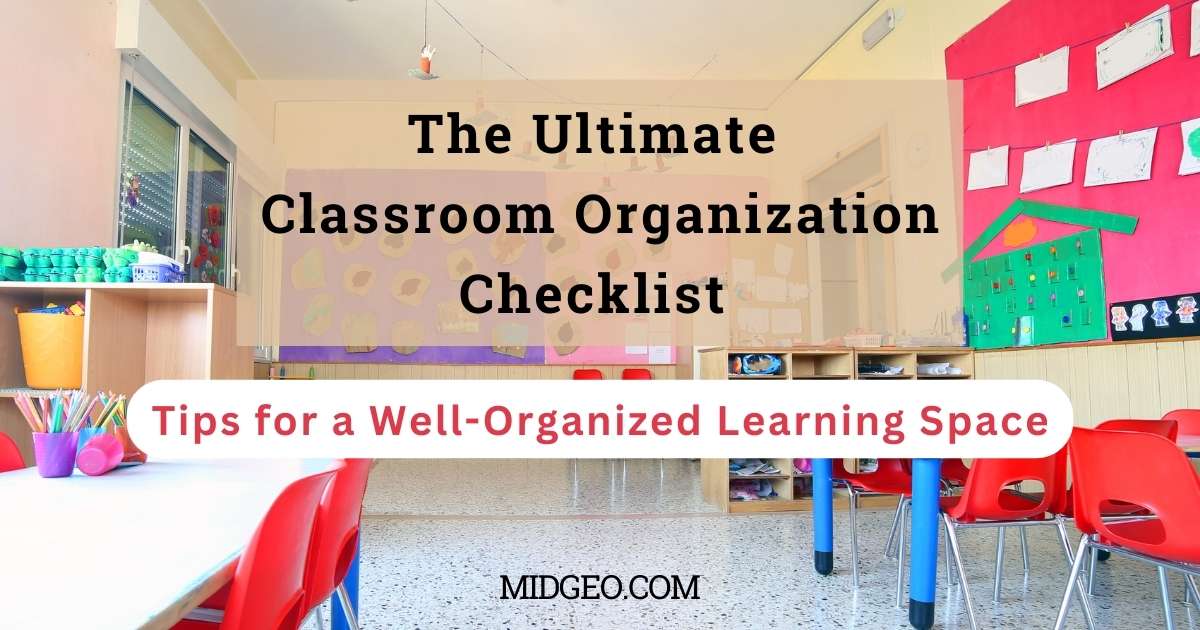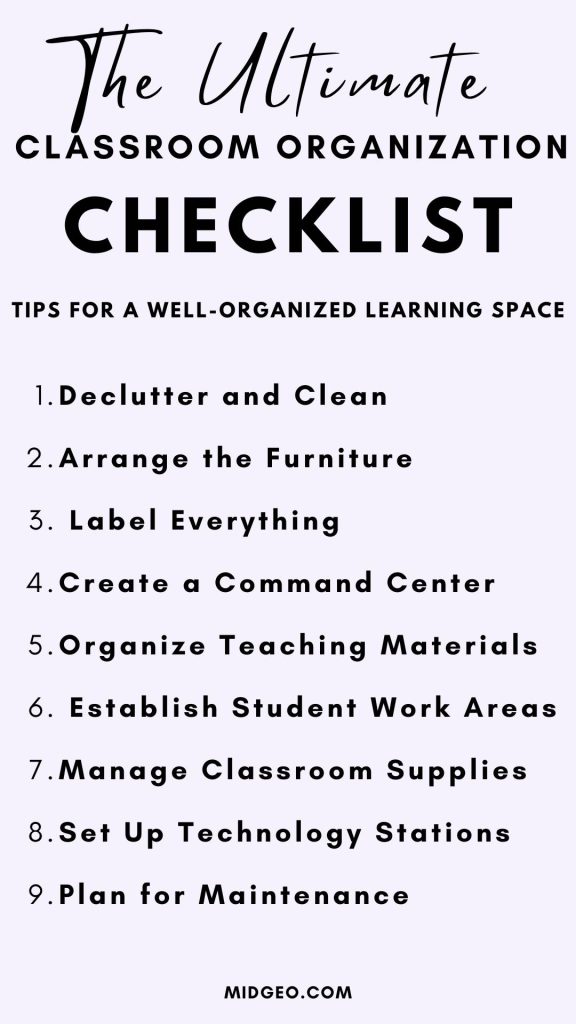The Ultimate Classroom Organization Checklist: Tips for a Well-Organized Learning Space

A well-organized classroom is essential for creating an environment where students can thrive.
A tidy and efficient space not only helps reduce stress for both teachers and students but also promotes better learning outcomes.
Whether you’re setting up a new classroom or looking to improve your current setup, this ultimate classroom organization checklist will help you create a productive and welcoming learning space.
Classroom Organization Checklist
Content Summery

1. Declutter and Clean
Checklist:
- Sort through existing materials and remove anything outdated or unnecessary.
- Clean all surfaces, including desks, shelves, and whiteboards.
- Organize remaining materials into categories (e.g., books, supplies, student work).
Tips:
- Dedicate time before the school year starts to thoroughly declutter.
- Consider implementing a “one in, one out” policy to keep clutter at bay throughout the year.
2. Arrange the Furniture
Checklist:
- Position student desks to promote engagement and interaction.
- Ensure the teacher’s desk is placed where it has a clear view of the entire classroom.
- Create dedicated areas for group work, reading, and independent study.
Tips:
- Experiment with different desk arrangements (e.g., rows, clusters, U-shape) to find what works best for your teaching style and your students’ needs.
- Leave enough space for easy movement around the classroom.
3. Label Everything
Checklist:
- Label shelves and storage bins clearly.
- Use student names or numbers on cubbies, desks, and lockers.
- Label classroom supplies and resources.
Tips:
- Use colorful and easy-to-read labels to make items easy to locate.
- Involve students in labeling to help them feel ownership over their space.
4. Create a Command Center
Checklist:
- Designate an area for important classroom information (e.g., calendar, schedule, announcements).
- Include a spot for lesson plans and teaching materials.
Tips:
- Use a bulletin board or a wall-mounted organizer to keep everything visible and accessible.
- Update the command center regularly to reflect current information.
5. Organize Teaching Materials
Checklist:
- Sort books and resources by subject and grade level.
- Use binders or digital tools to organize lesson plans and worksheets.
- Keep frequently used items within easy reach.
Tips:
- Create a filing system for quick access to lesson plans and resources.
- Store seasonal or rarely used materials in labeled bins or boxes.
6. Establish Student Work Areas
Checklist:
- Set up a dedicated space for students to turn in assignments.
- Provide a designated area for finished work to be displayed.
- Create individual or group storage areas for student supplies and projects.
Tips:
- Use bins or trays for each student or group to keep their materials organized.
- Rotate displayed work regularly to keep the area fresh and motivating.
Read Also: Ultimate Back to School Supplies List: Gear Up for a Successful School Year
7. Manage Classroom Supplies
Checklist:
- Stock up on essential supplies (e.g., pencils, paper, markers).
- Create a system for distributing and collecting supplies.
- Keep a checklist to track inventory and reorder when necessary.
Tips:
- Use clear bins or containers to make supplies easy to find.
- Teach students to be responsible for their supplies and return them to the correct place.
8. Set Up Technology Stations
Checklist:
- Designate areas for computers, tablets, and other tech devices.
- Ensure all cords and cables are safely managed and out of the way.
- Keep tech supplies (e.g., headphones, chargers) organized and accessible.
Tips:
- Label each device with a number or name to keep track of them.
- Establish rules and procedures for using technology to prevent misuse and damage.
9. Plan for Maintenance
Checklist:
- Schedule regular cleaning and organizing sessions.
- Create a checklist for daily, weekly, and monthly tasks.
- Encourage students to help maintain the classroom’s organization.
Tips:
- Use a classroom job chart to assign students specific tasks.
- Reward students for keeping the classroom neat and tidy.
Final Thoughts
An organized classroom sets the foundation for a successful and enjoyable school year.
By following this ultimate classroom organization checklist, you can create a learning environment that is efficient, welcoming, and conducive to both teaching and learning.
You Might Like: Master Your Studies: 3 Secret College Study Tips for Students You Need to Know
Take the time to plan and implement these strategies, and you’ll see the benefits in improved student engagement and a smoother, more productive classroom experience.



